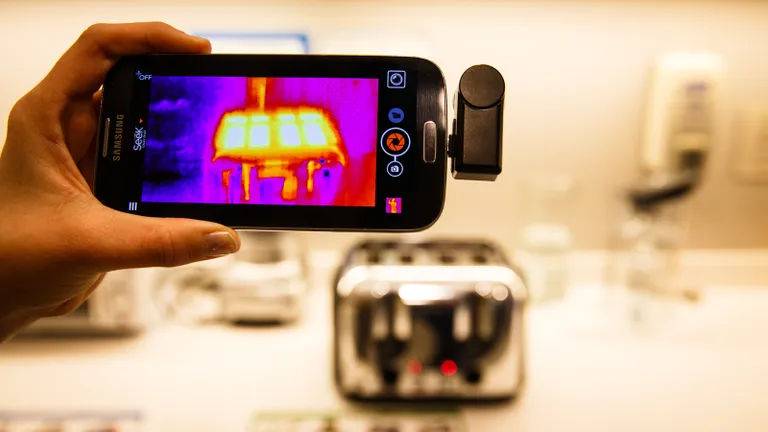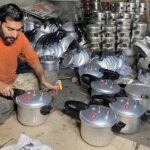In today’s world, technology continues to evolve at an astonishing pace, and one of the latest innovations taking center stage is the heat camera smartphone. These powerful devices are revolutionizing how we perceive and interact with our surroundings. By integrating thermal imaging technology directly into mobile phones, users can now visualize temperature differences in real time, unlocking new possibilities for safety, work, and even creativity.
The Evolution of Smartphone Technology
Smartphones have come a long way from simple communication tools to multifunctional devices that assist in nearly every aspect of modern life. With advanced cameras, sensors, and AI-driven features, phones have become essential companions. The introduction of the phone with heat camera represents a new milestone in this journey.
Originally, thermal imaging technology was primarily used by professionals—engineers, firefighters, and military personnel—who relied on expensive, bulky equipment. But today, that same capability has been miniaturized and made accessible through smartphones. A heat camera phone allows users to see beyond what the human eye can detect, capturing the invisible world of heat energy and temperature variations.
How Does a Heat Camera Smartphone Work?
A heat camera smartphone operates using infrared sensors that detect heat emitted by objects and living beings. Every object with a temperature above absolute zero releases infrared radiation. The thermal camera captures this radiation and converts it into a visual image where different colors represent varying temperatures.
For instance, warmer areas may appear in shades of red, orange, or yellow, while cooler areas are depicted in blue or purple. This enables users to identify heat leaks, locate people in the dark, or even detect electrical faults in circuits—all through a simple mobile device.
Manufacturers achieve this functionality by embedding a compact thermal imaging module within the phone’s camera system or offering it as an external attachment. When paired with specialized software, these phones display detailed thermal images instantly on the screen.
Real-World Applications of Heat Camera Phones
The potential uses of a heat camera phone are almost limitless. From professional applications to everyday use, this technology offers practical benefits across multiple fields.
Home and Building Inspections
Homeowners and contractors can use a phone with heat camera to identify insulation issues, detect heat leaks, or spot areas where energy efficiency can be improved. It can even reveal water leaks hidden behind walls or under floors by detecting temperature differences caused by moisture.
Electrical and Mechanical Maintenance
Electricians and engineers often need to locate overheating components or overloaded circuits. A heat camera smartphone provides an instant diagnostic tool to visualize temperature spikes in wires, motors, and electrical panels—helping prevent failures and improving safety.
Firefighting and Search Operations
In emergency services, thermal imaging has long been a life-saving technology. Now, with smartphones offering this feature, firefighters can locate people through smoke or darkness, while rescue teams can find missing persons in low-visibility environments. The portability of a heat camera phone makes it an invaluable companion during critical missions.
Veterinary and Medical Uses
Veterinarians and healthcare professionals can use thermal imaging to detect inflammation, circulation problems, or infections. While not a replacement for medical-grade equipment, a phone with heat camera offers an affordable, quick, and non-invasive diagnostic tool for preliminary assessments.
Outdoor and Recreational Uses
Outdoor enthusiasts can use thermal cameras to observe wildlife at night or detect animals hidden in foliage. Campers can also use a heat camera smartphone to ensure their campsite is safe or find lost pets after sunset.
Advantages of Using a Phone with Heat Camera
The popularity of heat camera smartphones is rising rapidly due to their versatility and convenience. Some of the key benefits include:
1. Portability and Accessibility
Previously, thermal imaging cameras were heavy, costly, and required professional training. A heat camera phone combines this advanced technology with portability, making it accessible to everyday users.
2. Real-Time Insights
Whether you are inspecting a building or hiking in the dark, real-time thermal visuals provide instant information. The responsiveness of a phone with heat camera means users can make quick, informed decisions without needing extra tools.
3. Enhanced Safety
From detecting overheating appliances to identifying unseen hazards, these phones significantly enhance safety in both homes and workplaces. The ability to spot temperature anomalies early can prevent accidents and costly damages.
4. Cost-Effective Technology
Compared to professional thermal cameras, heat camera smartphones are affordable and user-friendly. This democratization of technology ensures that everyone—from DIY enthusiasts to small business owners—can benefit from advanced imaging capabilities.
5. Integration with Modern Apps
Manufacturers now provide specialized apps that allow users to record, analyze, and share thermal images directly. This integration transforms a heat camera phone into a complete analytical device, suitable for reports, studies, or maintenance logs.
Notable Models in the Market
Several smartphone brands have begun integrating thermal imaging into their devices. Leading examples include models from CAT, Blackview, and Ulefone, which are known for their rugged designs and professional-grade thermal sensors.
Some models feature built-in heat camera smartphone technology, while others offer detachable modules compatible with Android and iOS devices. These options cater to both professionals and casual users, ensuring there’s a suitable product for every need and budget.
The Role of AI and Software in Thermal Imaging
The evolution of heat camera phones isn’t just about hardware; software and AI play crucial roles too. Modern thermal imaging apps now include features like temperature tracking, auto-calibration, and object recognition. Artificial intelligence enhances accuracy by adjusting readings according to environmental conditions.
Moreover, AI-powered image enhancement ensures clearer, more detailed thermal visuals. For instance, overlaying thermal images with standard camera views provides a hybrid visualization that highlights temperature variations precisely where they occur.
How Heat Camera Smartphones Are Impacting Society
The influence of this innovation extends beyond personal convenience. In industrial, scientific, and environmental sectors, heat camera smartphones are changing how we analyze and interpret data.
In agriculture, farmers use them to monitor livestock health and irrigation efficiency. Environmental researchers use thermal imaging to study wildlife behavior and track heat emissions in cities. Even educators and students benefit from using a phone with heat camera as a learning tool to explore thermal properties in physics and biology.
The Future of Heat Camera Smartphones
As technology continues to evolve, heat camera phones are expected to become even more advanced and widespread. Future models may feature higher resolution sensors, improved range, and enhanced integration with augmented reality (AR) and virtual reality (VR).
Imagine pointing your phone at a building and instantly visualizing not only its thermal profile but also receiving AI-driven recommendations for improving energy efficiency. That future is closer than ever.
Moreover, with the rise of the Internet of Things (IoT), heat camera smartphones could seamlessly connect with smart home systems, automatically detecting overheating devices or fire hazards in real time.
Conclusion
The heat camera smartphone is more than just a gadget—it represents a paradigm shift in how we perceive the invisible world of heat and energy. From professional applications to everyday use, these phones bridge the gap between technology and human intuition. They empower users to see beyond the visible, enhancing safety, efficiency, and creativity in countless ways.


